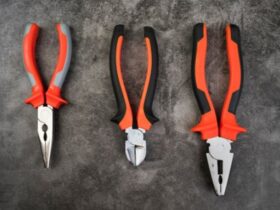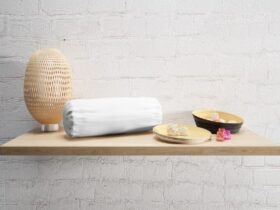If you’ve ever found yourself staring into the abyss of a cluttered and chaotic kitchen sink, you’re not alone. For many homeowners, the sink area can quickly go from a functional workspace to a disaster zone of sponges, scrub brushes, and dish soap. This accumulation of items not only looks untidy but can also disrupt the flow of your kitchen activities, making chores more time-consuming and less enjoyable. This ultimate guide to sink organizers is here to rescue you from the abyss of disorganization and elevate your kitchen to a tidy and efficient space.
In this comprehensive exploration, we’ll delve into the importance of an organized kitchen sink, the myriad benefits of a sink organizer, the various types available on the market, choosing the right one for your needs, savvy DIY ideas to customize your sink space, tips for maintaining a clean and functional organizer, and even real-life case studies to inspire your setup. Whether you’re a homeowner seeking to streamline your daily kitchen routine, a decor enthusiast looking to add a touch of sophistication, or simply a neat freak passionate about keeping your home in tiptop shape, this guide is your one-stop resource for all things sink organization.
So, roll up your sleeves, because by the end of this read, you’ll be equipped with the knowledge and inspiration to transform your kitchen sink from a mess to a model of organization and efficiency.
Why a Sink Organizer is Essential
The kitchen sink, often described as the heart of the kitchen, is where many household chores begin and end. It’s where we prep food, clean dishes, wash our hands, and often where we keep our cleaning tools. If this central hub is disordered, it can cause a ripple effect throughout the rest of the space, leading to an overall sense of disarray in your kitchen.
Common Sink Woes
Without proper organization, a kitchen sink can quickly become a conglomeration of issues:
- Clutter: With no designated spots for sponges, dish soap, or scrubbies, these items often end up strewn around the sink, creating clutter.
- Wet Countertops: Wet sponges and brushes aren’t just unsightly; they can also make your countertops unnecessarily damp and dirty.
- Lack of Space: Juggling multiple items in a tight space can be frustrating. If not careful, this can even lead to the accidental dropping of items, which might not only create more work but could damage your sink or countertop.
- Aesthetic Downfall: A messy sink area brings down the overall appearance of your kitchen, especially if it’s an open-concept or visible from the dining or living area.
- Hygiene Concerns: A disorganized sink is a breeding ground for bacteria. When unclean items are scattered and left to air dry, you run the risk of contamination.
The Benefits of an Organized Sink
A sink organizer is not merely a container for your cleaning tools; it’s a powerful ally in the fight against disarray. Here’s how it can help:
- Space Optimization: By providing designated spots for each item, a sink organizer can make use of every inch of your sink’s real estate.
- Quick Access: With everything in one place, you’ll spend less time searching for items and more time getting tasks done.
- Improved Aesthetics: With an organized sink, your kitchen immediately looks tidier and more put together.
- Durability and Protection: Stackable organizers can help keep your cleaning tools dry and minimize wear and tear.
- Hygiene: By allowing your tools to thoroughly dry and by providing a quick cleanup of spills and splashes, an organizer contributes to a hygienic environment.
Understanding the Different Types of Sink Organizers
When it comes to sink organizers, there’s no one-size-fits-all solution. Sink organizers come in a variety of styles, each with its own set of pros and cons. Let’s explore the different types you can find in the market today:
Caddies
Sink caddies are the most traditional form of sink organization. They typically feature a compartment for holding a bottle of dish soap and a separate space for a sponge or scrubber. Some contemporary designs may also feature additional areas for cleaning brushes and gloves.
Pros: Caddies are usually affordable, and they offer a compact way to store your most-used cleaning tools.
Cons: They can sometimes be limited in the number of items they can store, and the space provided may not fit larger cleaning products.
Over-the-Sink Shelves
These are usually freestanding shelves that sit over the sink, providing a platform for drying dishes and a place to store clean plates, pots, or pans. They often feature a dish rack and utensil holder, maximizing the drying space and keeping dishes organized while not in use.
Pros: Over-the-sink shelves are great for small kitchens with limited counter space and come in a variety of materials to match your kitchen aesthetic.
Cons: They can be pricier than other options, and some people may find them too large or intrusive, especially if they block a window or hinder the ease of using the sink itself.
Baskets and Bins
These are simple and versatile options that can be placed at the bottom of the sink to catch food scraps or divide cleaning supplies.
Pros: They are easily adjustable to fit various sink sizes, and the perforated designs help items dry more quickly.
Cons: Since they sit within the sink, they can reduce the overall space available for washing, and their exposed nature can make the items inside more prone to splashes and spills.
Magnetic Holders
Magnetic holders come in the form of strips that adhere to the wall or the side of the sink. They are used to hold metal items like knives or sink tools in an accessible yet out-of-the-way manner.
Pros: They save counter and drawer space and provide a sleek, modern look.
Cons: They’re not suited for non-metal items, and their placement is fixed, so they may not be ideal for all sink setups.
Pocket Organizers
Pocket organizers are fabric or plastic sleeves that hang over the cabinet door under the sink. They often feature pockets of varying sizes to hold different cleaning supplies.
Pros: They’re great for people who want to keep their sink area clutter-free and value hidden storage.
Cons: They may not be as quick to access as some other options, and they do necessitate free space under the sink for installation.
Choosing the Right Sink Organizer for Your Needs
Selecting the right sink organizer is a personal choice that depends on your kitchen’s layout, your cleaning style, and your aesthetic preferences. To help you make an informed decision, here are the key factors to consider:
Size and Space
First, evaluate the dimensions of your sink area. Consider the available space and how much you need to store there. If you have a small sink, a compact caddy might be the best solution. Alternatively, an over-the-sink shelf can be perfect for drying dishes and providing extra storage in kitchens with limited counter space.
Functionality
Think about the tools you use most often and how you prefer to access them. If you frequently switch between sponges, brushes, and dish soap, a caddy that keeps everything within arm’s reach might be ideal. On the other hand, if you prioritize a clean, clutter-free sink, a concealed pocket organizer could be the better fit.
Aesthetics
Your sink organizer isn’t just about function – it’s also about form. Consider the design, material, and color of the organizer you choose to ensure it complements your kitchen decor. Stainless steel caddies or magnetic holders provide a modern look, while woven baskets can add a touch of warmth.
Maintenance
Some sink organizers are easier to clean than others. For convenience, opt for designs with smooth surfaces and detachable parts that can be washed in the dishwasher. Additionally, consider how well the organizer will be at protecting your sink and counter area from spills and splashes.
Budget
Finally, as with any purchase, consider your budget. Sink organizers can range in price from a few dollars to hundreds, so decide how much you’re willing to invest based on the features and materials that are most important to you.
Once you’ve considered these factors, now is the fun part – shopping! In the next section, we’ll take a look at some creative and budget-friendly DIY options for the industrious home organizer.
DIY Sink Organizer Ideas
Not finding the sink organizer of your dreams on the market? Don’t fret; there are plenty of inventive and affordable ways to make your own. Here are a few of our favorite DIY sink organizer projects:
Re-purposed Cake Stand
An old cake stand can find new life as a two-tiered sink organizer. The top tier can hold a soap dispenser and scrub brush, and the lower tier can accommodate a dish soap bottle and a sponge.
How-to: Secure pieces together with a strong adhesive, then paint or refinish to match your kitchen decor.
Tension Rod and Basket
Hang a tension rod inside a cabinet under your sink, then attach a wire or metal basket to hold cleaning supplies.
How-to: Measure the space under your sink to find the right size tension rod and basket. Install the rod, and hang the basket from the rod, adjusting as needed. This setup provides hidden storage while keeping your sink area free from clutter.
Pallet Wood Shelf
For a rustic look, craft a simple shelf from pallet wood to sit on your counter or mount on the wall above the sink.
How-to: Cut a section from a pallet, sand it down, and varnish or paint for a custom look. Attach brackets and screw the shelf into the wall. Use it to store cleaning supplies, potted herbs, or small kitchen tools.
Pegboard Wall
Convert a section of your kitchen wall into a pegboard with hooks to hang utensils and mugs, and small shelves to store cleaning products.
How-to: Cut the pegboard to fit your desired space and paint if desired. Mount it to the wall, then attach hooks and shelves to store and organize your items. A pegboard provides versatile storage that is easily accessible and customizable to your needs.
Next, let’s discuss how to maintain your sink organizer once it’s in place, and keep your sink looking fabulous for the long haul.
Maintenance and Cleaning Tips
An integral part of enjoying your kitchen organizer is keeping it clean and well-maintained. Here are some tips to ensure your sink setup remains a picture of perfection:
Regular Cleaning Routine
Incorporate your sink organizer into your regular cleaning schedule. Wipe it down with a damp cloth at the end of each day to maintain a clean appearance.
Deep Clean
Periodically, disassemble your sink organizer for a deep clean. Wash all components thoroughly, and dry them completely before reassembling or using them again.
Dry
Ensure that items like sponges and scrub brushes are allowed to dry completely after use. This not only prevents a musty smell but also enhances the life of your cleaning tools.
Switch It Up
Every so often, switch the position of your cleaning supplies within the organizer to prevent any one area from becoming too worn or dirty.
Grout and Seals
If you have a ceramic or stone countertop, be mindful of the grout lines and seal them regularly to prevent water damage and mold growth.
By incorporating these maintenance tips into your kitchen routine, you’ll keep your sink area looking sharp and functional year-round.
Real Life Examples and Case Studies
To provide inspiration and practical insight, this section will highlight a few real-life examples and success stories of individuals who have transformed their sink areas through strategic organization.
Before and After Transformations
We’ll showcase several before and after photos that depict the chaotic and disorganized state of kitchen sinks, followed by the pristine and purposeful setups these individuals achieved through the use of sink organizers.
Testimonials
Let’s hear from the homeowners themselves! We will gather testimonies that outline the challenges they faced with their kitchens’ sink areas and how implementing a sink organizer changed the game.
Conclusion
Your kitchen sink is a significant work zone that deserves the same level of attention as the rest of your kitchen. With the right sink organizer, you can elevate the functionality, aesthetics, and overall experience of working in and around your sink. By understanding the need for organization, exploring the types and options available, choosing the right fit for your lifestyle, and implementing good maintenance, your kitchen will become a more enjoyable and efficient place to work.
We’ve covered the importance and benefits of a tidy sink, explored the plethora of sink organizer options, provided in-depth guidance on selecting or crafting the ideal solution for different needs, and shared maintenance and case study insights. So if you’re ready to roll up your sleeves and transform your kitchen sink, start by assessing your current setup and needs, and work your way through the steps provided here. With a little effort and the right tools, you can turn your sink from a stress-inducing situation to a well-oiled cleaning machine!









Leave a Reply